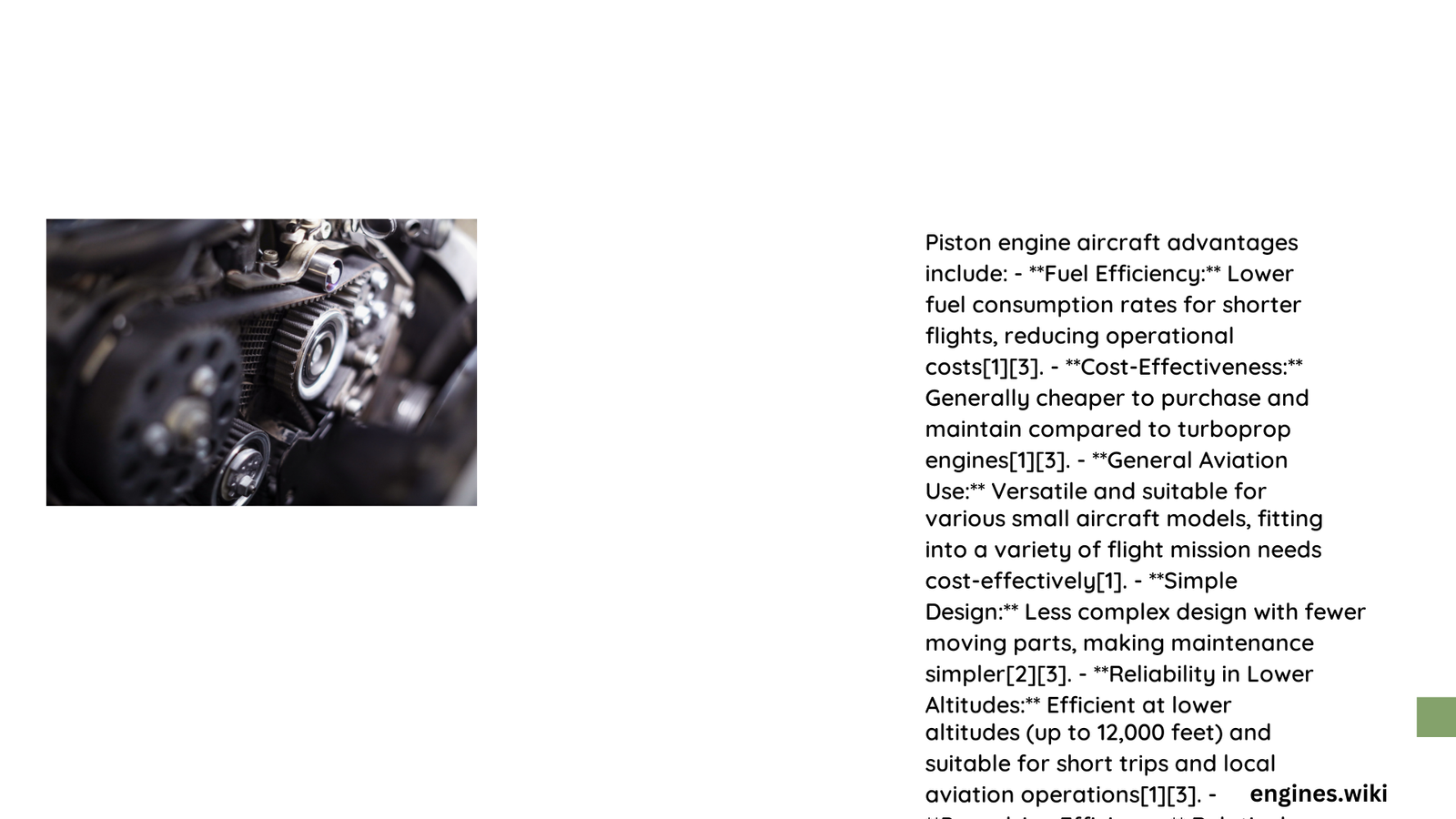Piston engine aircraft represent a critical segment of general aviation, offering unique advantages in fuel efficiency, operational flexibility, and cost-effectiveness. These versatile aircraft leverage reciprocating engine technology to provide pilots and operators with economical transportation solutions across various mission profiles, from personal travel to specialized commercial applications.
What Makes Piston Engine Aircraft Economically Attractive?
Fuel Efficiency Metrics
Piston engine aircraft demonstrate remarkable fuel consumption characteristics that make them economically compelling:
| Performance Metric | Typical Range | Significance |
|---|---|---|
| Brake Specific Fuel Consumption | 0.4-0.6 lb/hp/hr | Indicates energy conversion efficiency |
| Specific Range | 1.36-2.08 miles/pound of fuel | Measures distance traveled per fuel unit |
| Average Fuel Burn | 12 gallons/hour | Enables cost-effective short to medium-range operations |
Comparative Fuel Performance
- Lower Operating Costs: Piston engines consume less fuel compared to turbine alternatives
- Predictable Fuel Consumption: Consistent performance across various flight conditions
- Flexible Fuel Options: Compatible with multiple aviation fuel grades
Why Do Maintenance Costs Remain Competitive?
Piston engine aircraft offer significant maintenance advantages:
- Simplified Mechanical Design
- Fewer complex components
- Easier diagnostic procedures
-
Lower replacement part costs
-
Accessible Maintenance Infrastructure
- Widespread mechanic expertise
- Readily available replacement parts
- Lower hourly labor rates compared to turbine engine maintenance
How Do Takeoff Characteristics Compare?
Piston engine aircraft demonstrate impressive performance characteristics:
- Runway Requirements
- Short takeoff distances (1,000-1,500 feet)
- Adaptable to smaller airfields
-
Reduced infrastructure dependency
-
Weight Capacity Ranges
- 2,000-10,000 pounds maximum takeoff weight
- Suitable for personal and light commercial operations
What Operational Flexibility Exists?
Piston engine aircraft provide unique operational advantages:
- Versatile Mission Profiles
- Training
- Personal transportation
- Agricultural operations
- Aerial surveying
-
Search and rescue
-
Lower Initial Investment
- More affordable acquisition costs
- Reduced financial barrier to entry
- Attractive for individual owners and small operators
Environmental and Noise Considerations
- Moderate Noise Levels
- 70-90 decibels during operations
- Compliance with local noise regulations
- Less environmental impact compared to larger aircraft
Conclusion

Piston engine aircraft continue to play a crucial role in general aviation, offering a balanced combination of economic efficiency, operational flexibility, and reliable performance across diverse mission requirements.
